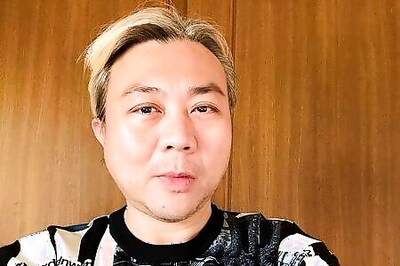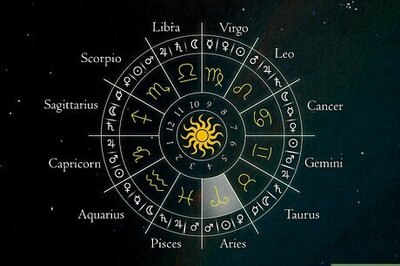
views
BANGALORE: A prominent wind instrument, Nagaswara is not only deemed to be an auspicious musical instrument but also proven to be one of the most important resourceful fountainhead of the Carnatic music. Essentially a temple and open-air instrument, Nagaswara play is always evocative. The 64th Sri Ramanavami music festival under the aegis of Sri Seshadripuram Ramaseva Samithi led by Tarakaram and Revathi Tarakaram had a traditional beginning recently at the open-air auditorium of Seshadripuram College. Pancha (five) nagaswaras led by young and seasoned artiste V Murali auspicated the abounding season of music. Murali along with his son M Durgesh, P Rajagopal, G S Anjaneyalu and R Rangaswamy exhibited their expertise on five nagaswaras. Y Venkataswami Mayasandra and P M Mani Poonapalli imparted a vibrant tavil (barrel shaped drum) support.Though on a couple of occasions the variations in the volume of sound was disturbing, Murali and his co-artistes regaled the audience with their sincere approach and unostentatious artistry. The Nagaswara recital began with a rare varna by Govindarajan in Sumanasaranjini. The panchanadais and different kala swaras at the end of the varna proclaimed the laya grip of the artistes. Sri Mahaganapatheravatumam (Gowla) was decorated with a brief swaravinyasa. The famous Swati Tirunal’s epitome of Ramayana Bhavayami Raghuramam set in saptha ragas comprising Saveri, Nattikuranji, Dhanyasi, Mohana, Mukhari, Poorvikalyani and Madhyamavathi was impressive due to the vocal-based rendition of the quintet. The detailed sketching of Kharaharapriya (Chakkani rajamargamu) and Charukeshi (Adamodigalada) tended to be a very tasteful musical salad.Cascade of Laya: The 12th Sri Ramanavami festival held at Sri Raghavendra and Anjaneya temple, Malleshwara concluded with the presentation of ‘Pranava Sri’ awards to veteran artistes Narayanaiyengar, Govindaswamy and Susheela Ranganath. Vocalist Varuni Jayateerthachar rendered Guruvandana to Scholar-musician Dr. Srikantham Nagendra Sastry. This was followed by a vibrant and vivacious concert by the Laya Milana percussion ensemble of Sri Mookambika Talavadya Sangeethashale led by veteran mridangist, B K Chandramowli. The percussion ensemble was supported by a highly talented flautist N Rajakamal and veteran violinist T T Srinivasan. These two high caliber artistes drew vivid pictures of Hamsadhwani (Vatapi) and tickled the percussionists to warm up and create some interesting laya patterns.Kadanakutoohala (Raghuvamsha Sudhaambudhi), as is its wont, excited the artistes and also the audience with artistic permutation and combination of laya. Charukeshi (Adamodigalada) was ornamented with alapana and tanas by Rajakamal and Srinivasan. The sawal-jawab (dialogue) among the melodic and percussion instrumentalists created a cascade of laya. B K Chandramowli (mridanga and konnokkol), Anur Dattatreyasharma (mridanga), Srihari-Nagaraj (khanjaris), M A Krishnamurthy (ghata), Bheemachar (morsing), Dhruvaraj (dholak), Udayraj (tabla), Karthickmani (special percussive), Harshasamaga (chande) and Arunkumar (drums) put their heads and hands together in drawing a resounding picture of laya.Artistic and aesthetic vocals: Classical music inherited in genes has its own special effect both on the artiste and also on the listeners. The vocal recital by Sriranjini Santanagopalan, a daughter-disciple of a noted singer Naiveli Santanagopalan at Seshadripuram College auditorium served a shining example for the above statement. Sriranjini delighted the rasikas with her simple, solid and scholarly music which had aesthetic and artistic dimensions too. Blessed with a rich voice with three and a half octave reach and range, she sang melodiously. Her treatment of laya and creation of rhythmic patterns reminded me of her father but it never tended to be a mere imitation. Opening with Nattikuranji varna, she presented Guruleka in Gowrimanohari raga with a brief raga overture. The neraval and swaras at Tatwabodhana were a class by themselves. Detailed Kamavardhini for Sadaa enna hridayadalli was endearing but the way she ended up the krithi without neraval and swaraprastara was somewhat disappointing. Kharaharapriya was elaborated with all its nuances intact and the krithi ‘Nadachi nadachi’ attached with neraval (Pudamisutha sahayudai) and kalpanaswaras brought to the fore, her brilliant vidwath. Nalina Mohan (violin), Anuru Ananthakrishnasharma (mridanga) and B S Purushottam (khanjari) excelled in their departments.Refined sarod: At the same venue, veteran Sarod maestro Dr Rajeev Taranath stirred the emotions of the listeners with his refined rendition of Puirya Kalyan (vilambit and drut teental), ragamala (jhaptal) and Bhairavi. Accompanied aptly by Udayaraj Karpur (tabla) and Arunkumar (sitar), the sarodia’s effective laya, technical excellence and emotional range cast a spell on the audience.




















Comments
0 comment